The final “Passing of the Pioneers” for 2011 sees another thirteen Western District pioneers remembered. That takes the number of obituaries recorded into the sixties. The information in each listing is from the newspaper obituary which is a secondary source. If I have found a pioneer interesting, I may include further information, for which there will be a reference available. All “Passing of the Pioneers” posts can be found under “Obituary” in the Category tab in the sidebar.
“Passing of the Pioneers” will be back in 2012 and with more Western District newspapers available at Trove, there were will be even more obituaries to choose from. I have also updated the post “The Horsham Times goes Digital” to reflect the current additions at Trove.
Bridget Priscilla TALBOT: Died December 1904 at Hamilton. Bridget Talbot was born in County Cork, Ireland in 1834 and arrived in Australia in 1848. She married John Jennings in Adelaide in 1849 and they moved to Hamilton in 1852 where she resided until her death.
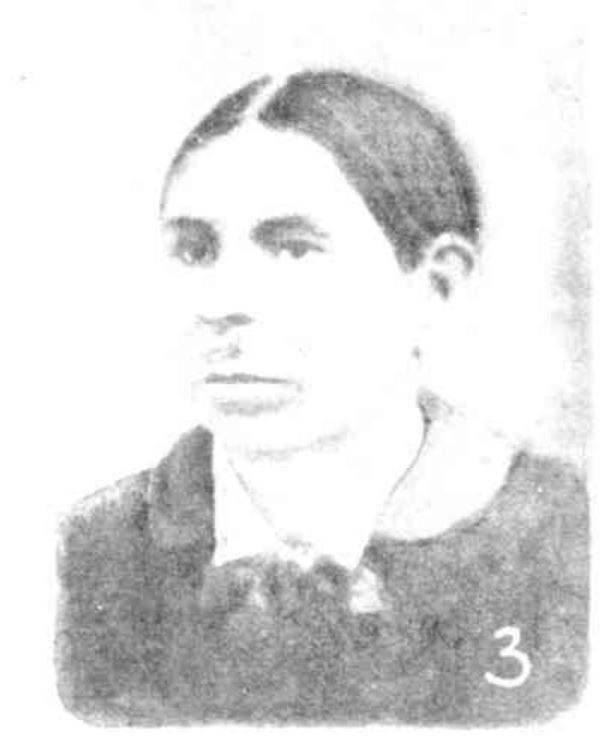
HAMILTON PIONEER. (1912, January 13). Leader (Melbourne, Vic. : 1862 – 1918, 1935), p. 32. Retrieved May 27, 2019, from http://nla.gov.au/nla.news-article198127055
Bridget was buried at the Hamilton (Old) Cemetery (below).
Richard PRICE: Died 15 December 1904 at Milltown. Richard Price arrived in Victoria in the late 1850s and settled at Digby. He later went on to Heywood before making his final home at Milltown where he worked in the sawmilling trade. He had eight sons and two daughters.
John PERMEWAN: Died 23 December 1904 at Ballarat. Born around 1837, John Permewan gave his name to the well-known stores of Victoria, Permewan Wright & Co. He was known around Australia in commercial circles. Permewans still exists in Hamilton. It has seen a couple of name and location changes, but I would often visit there with my parents in the 1970s and 80s for horse feed and saddlery, but it also stocked hardware and still does today.
Effie MURDOCH: Died December 1914 at Romsey. Effie Murdoch is the oldest pioneer I have come across to date. She died at age 106. Effie was from the Isle of Skye, Scotland and arrived in Australia in around 1852.
Margaret HOARE: Died 16 December 1914 at Nhill. Margaret Hoare and her husband Bernhardt Mulraney arrived in Australia from Ireland during the 1850s. After spending time around Hamilton, Mt. Gambier and Goroke, they settled in the Mallee at Nhill. Margaret was eighty at the time of her death.
John HARRIES: Died 18 December 1914 at Stawell. John Harries was born at Llanelly, Carmarthenshire, Wales in 1843 and arrived in Stawell in 1875. Like many with Welshmen, John could sing and was a member of Prout’s band at Ballarat and sang in the Presbyterian church choir.
John THORNTON: Died 15 December 1919 at Mount Myrtoon. John was born in Yorkshire in 1835 and travelled to Australia at age eighteen. He spent time in Melbourne and Gippsland before settling at Mount Myrtoon. He set up a successful stock and station business with links to Dalgetys. He was an accomplished cricketer and played for Victoria in his younger days. He was the Melbourne Cricket Club’s oldest member at the time of his death.
Mary McLEOD: Died December 1928 at Narracoorte. Mary McLeod was born in the Isle of Skye in 1842. After her mother died when she was eleven, her father moved the family to Australia. Mary took on the role of mother to her younger brothers. After they arrived in Melbourne, they travelled to Portland and then Narracoorte, South Australia by bullock wagon. She later married Angus MORRISON and they had eight children while living around the Apsley area.
Jenny Sage CRABBIE: Died 17 December 1932 at Branxholme. Jenny Crabbie was born in Edinburgh and having seen the boat the Julia Percy built in Scotland, she was offered passage to Australia by the ship’s directors, whom she knew. It was because of the ship that Jenny met her husband Benjamin Lear in Portland. Benjamin worked on the Julia Percy and continued to do so for some years after. Jenny would have been popular among Portland children. She was a confectioner, with a shop in Bentick Street, Portland for many years.
Annie PITTS: Died 12 December 1934 at Portland. Annie Pitts was born in Somerset, England and travelled to Australia with her parents, James and Sarah when she was three. She married John JENNINGS of Portland when she was twenty-one and they had ten children. Annie was eighty-five at the time of her death.
Louisa BROWN: Died 26 December 1937 at Camperdown. Louisa was just a baby when her family arrived in Victoria from Westminster, England. She married Henry SHARP, a stonemason, at Terang. They had four daughters and five sons, with the sons forming a quarrying business, Sharp Bros.

OBITUARY. (1937, December 30). Camperdown Chronicle (Vic. : 1877 – 1954), p. 7. Retrieved December 26, 2011, from http://nla.gov.au/nla.news-article28321980
Nicholas WHITE: Died 17 December 1942 at Portland. Born in 1869 at Cape Bridgewater, Nicholas was a farmer but a keen sporting interest and was knowledgeable about all matters of cricket and horse racing. His wife had previously passed away and they had one married daughter, Ethel.
James Trotter KITTSON: Died 11 December 1945 at Cape Bridgewater. James was a member of the pioneering Kittson family.

OBITUARY. (1945, December 17). Portland Guardian (Vic. : 1876 – 1953), p. 2 Edition: EVENING. Retrieved December 26, 2011, from http://nla.gov.au/nla.news-article64406262
James left a wife, son and daughter and was buried at the Bridgewater cemetery.















































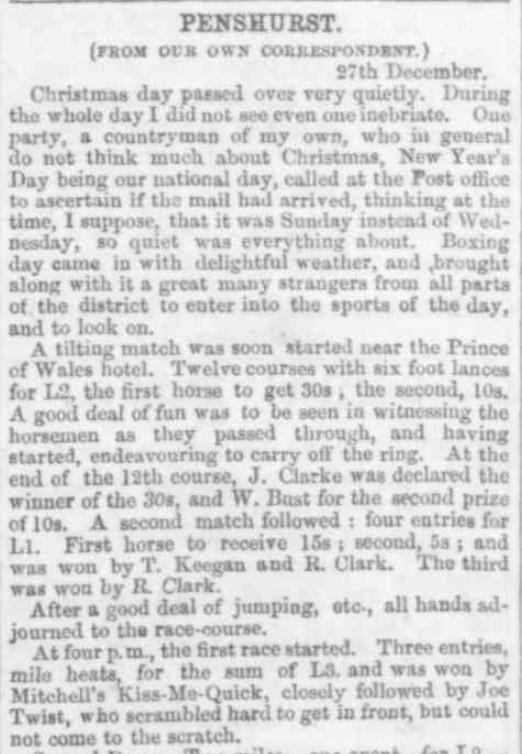













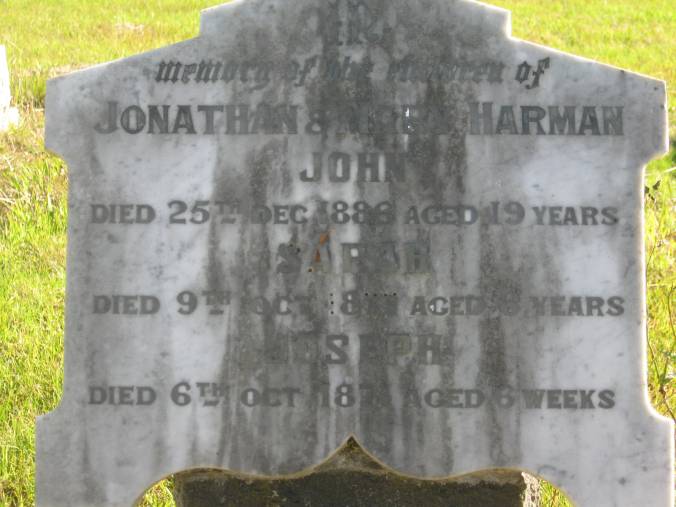










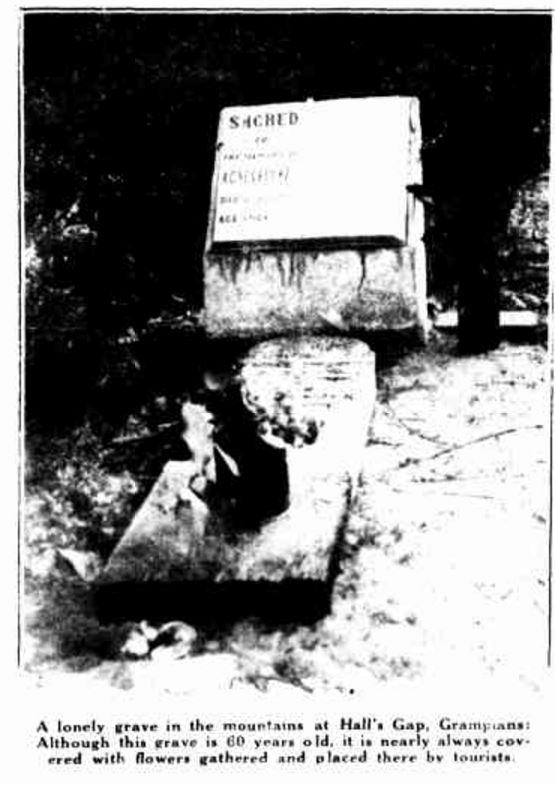

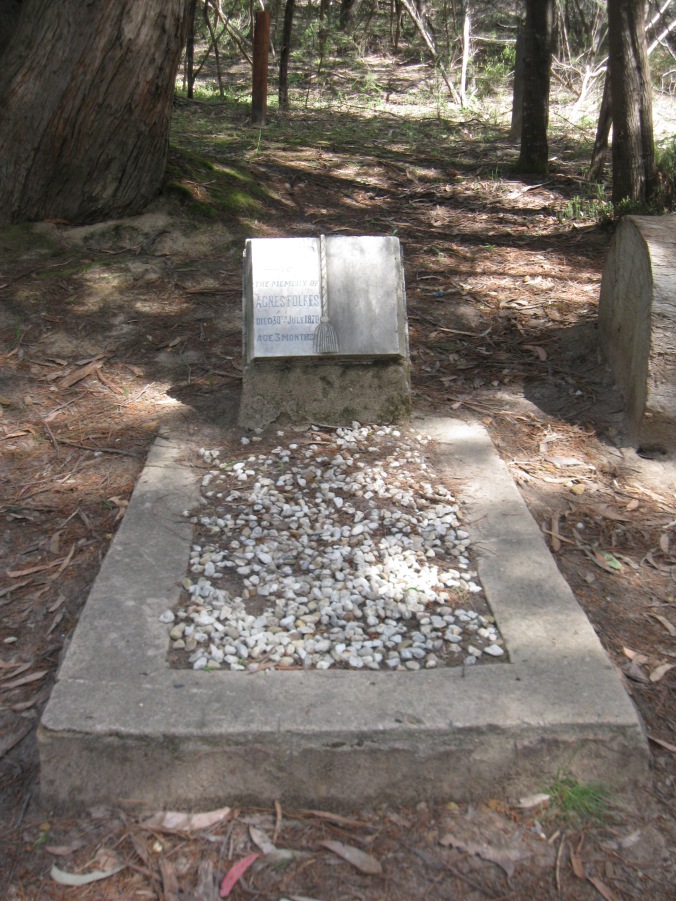







You must be logged in to post a comment.